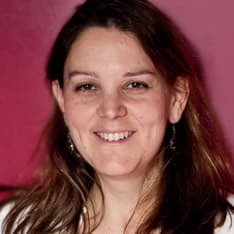Advertisement
Can Science Stop The Fertility Clock?
http://www.youtube.com/watch?v=JDaKsfx8yh4
By Karen Weintraub
Guest Contributor
For decades, science has said that women are born with all the eggs we are ever going to have.
Then, in 2004, Harvard researcher Jonathan Tilly said he’d found evidence that the female body has the cellular machinery needed to make eggs into adulthood. If true and if medicine could learn to manipulate this ability, it would have tremendous implications for infertility – extending the years women could reliably have children, and preserving fertility in women treated for cancer.
Tilly spent 8 years reconfirming his research and published a paper, released this afternoon, announcing that he was right back then, and has now taken the work a step further. The existence of the germ cells he found in 2004 “indicates that ovarian aging may be reversible” according to the paper.
If he’s right, his Boston-based company, OvaScience is sitting on a possible cure for infertility.
If he’s wrong – and some of his peers are still convinced that he is – he will have raised false hope in millions.
Dr. David L. Keefe, chairman of Obstetrics and Gynecology at New York University’s Langone Medical Center, said he’s already had patients wanting to defer adoption or egg donation because they were waiting for work like Tilly’s to solve their infertility problem.
He says he’d love to believe that Tilly has found a treatment for the women who come to him every day, desperate to conceive. But he doesn’t buy it.
In this new paper, published in the journal Nature Medicine, Tilly and his colleagues at Massachusetts General Hospital and elsewhere present evidence that the stem cells can create embryos in mice, and that the same stem cells exist in humans.
He stopped short of showing that these human stem cells can lead to eggs – a step that would take at least three to five more years of research, according to Dr. Kutluk Oktay, a professor at the New York Medical College, who sits on OvaScience’s scientific advisory board.
“If you were talking about an astronomy paper, this would be like finding microorganisms on Mars. We don’t know if there will be human life there, but there is some form of life he is showing us,” he said.
Oktay, who developed procedures for preserving ovarian tissue, said even if the stem cells couldn’t be coaxed into becoming mature egg cells, it might be enough for them to turn into immature egg cells. Then, their mitochondria, the cell’s power plants, could be taken out of the immature eggs and inserted into mature eggs a woman has had since birth, to rejuvenate them.
“This opens tremendous possibility for manipulating menopausal age,” he said.
Oktay concedes that there’s still a long way to go before anyone is cured of infertility.
“We should always be skeptical,” he said. Tilly, who could not be reached for comment, is “honing in on the truth here, sharpening the focus on what actually is happening in the ovary. I cannot find any significant holes in the data, but there may be other experts who might see something I’m not seeing.”
David Keefe sees it differently. The new paper, he said, “doesn’t reconcile all the negative data and just presents the positive data.”
There’s no question that human ovaries contain stem cells, which are capable of making other cell types. “Every part of the body has stem cells,” he said. But “they don’t make eggs. They don’t make babies.”
Keefe says the only ones who will benefit from this paper are OvaScience and the journal that published the paper.
Infertility affects nearly 12 percent of women of childbearing age; and roughly 7 million women had sought medical help for assistance with infertility in 2002, according to federal data.
Karen Weintraub is a Cambridge-based Health/Science writer and a frequent contributor to CommonHealth.
This program aired on February 27, 2012. The audio for this program is not available.
